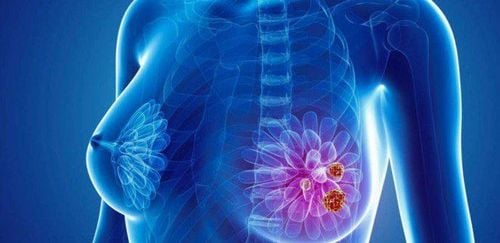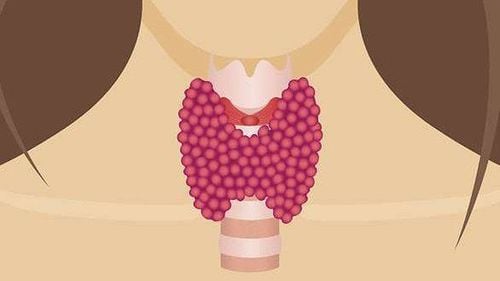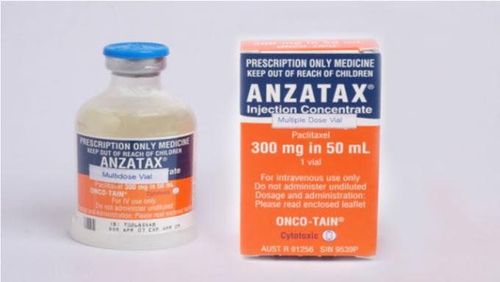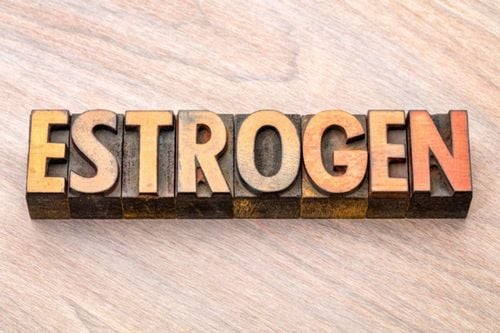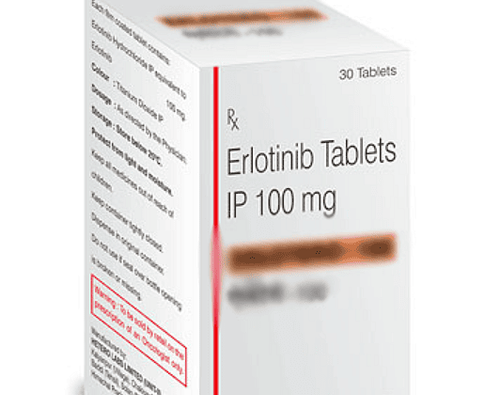This is an automatically translated article.
The stage or stage of breast cancer is considered a very important factor in deciding on treatment options for a patient. In general, the more widespread breast cancer, the more difficult it is to treat. For early-stage breast cancer, when detected early, it can be successfully treated thanks to different therapies.1. Overview of breast cancer treatment and diagnosis options
There are many treatments available at every stage for breast cancer. Most patients need a combination of 2 or more treatments to achieve the best possible results.After diagnosis, the doctor will determine the stage of breast cancer, thereby deciding how to choose the best treatment for the patient. These treatment options depend on several other factors, such as age, family history, personal medical history, and genetic mutation status.
Treatment options for early-stage breast cancer may not work for late-stage breast cancer. In general, breast cancer is divided into stages from 0 to 4, respectively, according to the degree of cancer progression, specifically including the following factors:
Size of the tumor Number of lymph nodes affected affected by breast cancer Has breast cancer spread to other parts of the body? Doctors will also use different imaging tests to stage breast cancer, including MRI scans, CT scans, X-rays, ultrasounds, and PET scans. These methods help doctors narrow down where the cancer is, calculate its size, and determine if the cancer has spread to other parts of the body.
If imaging tests show a tumor in another part of the body, the doctor may perform a biopsy to see if the tumor is benign or malignant. In addition, the physical examination and blood tests also help doctors analyze the stage of breast cancer, such as early or late breast cancer.
Trắc nghiệm: Những lầm tưởng và sự thật về ung thư vú
Ung thư vú có tỷ lệ tử vong cao nhất ở nữ giới khiến họ rất lo sợ bản thân mắc phải căn bệnh này. Tuy nhiên, không ít chị em có những hiểu biết thái quá về ung thư vú. Thử sức cùng bài trắc nghiệm sau sẽ giúp bạn loại bỏ được những nghi ngờ không đúng về căn bệnh này.
Bài dịch từ: webmd.com
2. What is early breast cancer?
Early breast cancer presents as malignancies in the breast tissue and may have spread to the lymph nodes, but has not metastasized or invaded surrounding organs. Compared with later stages of breast cancer (including 3 and 4), early breast cancer (including 0, 1 and 2) usually has a better prognosis.The most common type of breast cancer in its early stages is ductal carcinoma in situ (DCIS) – a non-invasive form of breast cancer. Stage 0 breast cancer is commonly known as carcinoma in situ. Types of carcinoma in situ of breast tissue include: ductal carcinoma in situ, Paget disease of the nipple, and lobular carcinoma in situ.
Stages 1 and 2 breast cancer is when the tumor has or has not spread to the lymph nodes in the armpit or breast. In some specific cases, cancer cells can spread outside the breast and armpit, but it is difficult to detect.
In general, early stage breast cancer when diagnosed and treated promptly, the patient's survival rate is higher.

3. Treatment options for early breast cancer
After diagnosing and determining the specific stage of early breast cancer, the doctor will recommend a number of suitable treatment options for the patient.3.1. Treatment options for stage 0 breast cancer (DCIS) Stage 0 breast cancer usually occurs when precancerous or cancerous cells are confined to the milk ducts. Doctors often refer to this condition as non-invasive cancer or ductal carcinoma in situ (DCIS).
Stage 0 breast cancer can invade and spread beyond the milk ducts, so early treatment is an important key to helping patients prevent the development of invasive breast cancer.
Surgery: Early stage breast cancer, specifically stage 0, can choose the treatment option surgical removal of the tumor. The doctor will remove the cancerous cells and remove the rest of the breast. This is considered a viable option when ductal carcinoma in situ (DCIS) is confined to one area of the breast. Breast lumpectomy can be done as an outpatient procedure. Patients can go home immediately after surgery and do not need to stay in the hospital overnight. In addition, the doctor may recommend that the patient have breast reconstruction surgery at the time of mastectomy or a day later. Radiation therapy: This is a targeted therapy commonly used for early-stage breast cancer. It was recommended by doctors after patients with stage 0 breast cancer had their tumors removed. High-energy X-rays are used to help kill cancer cells and prevent them from spreading. This treatment can help reduce the risk of recurrence when breast cancer is detected early. Radiation therapy is usually given five days per week for 5-7 weeks. Hormone therapy or targeted therapy: Patients with stage 0 breast cancer may be offered hormone therapy if they have had a lumpectomy or a mastectomy to treat their cancer. Progesterone or estrogen receptor-positive breast. Oral hormone treatments such as tamoxifen are often prescribed to reduce the risk of developing invasive breast cancer. Hormone therapy may not be indicated for women who have had both mastectomy for stage 0 breast cancer. Also, your doctor may recommend trastuzumab (Herceptin) as a therapy. targeted, if the breast cancer is HER2 positive. 3.2. Treatment options for stage 1 breast cancer Stage 1 breast cancer is divided into 2 sub-stages, including 1A and 2A. In stage 1A, the primary tumor is 2cm or less in size and has not affected the lymph nodes. For stage 1B breast cancer, the cancer has been found in the lymph nodes and there is no tumor in the breast, or the tumor is less than 2cm in size.
Stage 1 breast cancer is considered early stage invasive breast cancer. Surgery and other therapies may be recommended for this type of early breast cancer.
Tumor and breast excision are both possible options for stage 1 breast cancer. The decision to have surgery will be based on the following factors:
Patient preferences for early breast cancer Size and location of the primary breast tumor Genetic factors. In addition, a biopsy of the lymph nodes can also be done at the same time as surgery. Breast reconstruction is also recommended to begin at the same time as mastectomy depending on the preference of patients with stage 1 breast cancer or after completion of additional treatment.
Radiation therapy: This method is usually recommended after surgery for stage 1 breast cancer. However, radiation therapy is not necessary for women over 70, especially if the patient can be treated with chemotherapy. hormone therapy. Chemotherapy and targeted therapy: Progesterone, estrogen, and HER2-negative breast cancer is often referred to as triple-negative breast cancer (TNBC). Chemotherapy is always the first choice for these cases because there is no targeted method for TNBC. In addition, chemotherapy is also performed for hormone-positive breast cancer. Patients with HER2-positive breast cancer may receive Herceptin-targeted therapy along with chemotherapy. Your doctor may also recommend other HER2-targeted therapies, such as Nerlynx or Perjeta. However, chemotherapy is not always necessary with early-stage breast cancer, especially if it can be treated with hormone therapy: Doctors may recommend hormone therapy for patients with cancer. hormone receptor-positive breast cancer, regardless of tumor size.

Patients with stage 2 breast cancer may need a combination of chemotherapy, surgery, and one or more other methods such as radiation therapy, targeted therapy, and hormone therapy.
Surgery: Removal of the tumor and the breast are both options for patients with early stage breast cancer, specifically stage 2, depending on the location and size of the tumor. A total mastectomy usually involves the breast and also the pectoral muscles. If you choose breast reconstruction, the procedure can begin at the same time as or after cancer treatment is complete. Radiation therapy: This method targets any remaining cancer cells in the chest as well as the lymph nodes. Radiation therapy is usually recommended after surgery. Chemotherapy: This is a systemic therapy that kills cancer cells throughout the body. Strong chemotherapy drugs are given intravenously over weeks or months. Chemotherapy drugs commonly used to treat early-stage breast cancer include doxorubicin (Adriamycin), docetaxel (Taxotere), and cyclophosphamide (Cytoxan). You can also treat stage 2 breast cancer with a combination of certain chemotherapy drugs. Herceptin is often given along with chemotherapy for HER2-positive breast cancer. In addition, your doctor may also recommend other HER2-targeted therapies such as Perjeta or Nerlynx. Hormonal therapy: After completing other types of treatment, patients with hormone-positive breast cancer may choose to continue with hormone therapy. Aromatase inhibitors or oral medications such as tamoxifen may be prescribed to breast cancer patients for 5 years or more. Above is important information about breast cancer treatment, you can consult and consult with a specialist doctor to better understand the disease condition as well as treatment direction.
Breast cancer is a common cancer in women. If detected late, treatment will be more difficult than with early detection. Therefore, for subjects at risk, it is necessary to screen for breast cancer early to improve the chances of cure and limit recurrence.
Currently, Vinmec International General Hospital has been implementing a Breast Cancer Screening Package for women of different ages. At Vinmec, there are all necessary medical equipment to carry out the methods of examination, diagnosis, testing, imaging, and treatment performed by a team of highly qualified and experienced medical doctors. through training and technical certification, can handle quickly and efficiently. Therefore, when using Vinmec's breast cancer screening and early detection package, customers can detect cancer even when there are no symptoms.
Please dial HOTLINE for more information or register for an appointment HERE. Download MyVinmec app to make appointments faster and to manage your bookings easily.
Reference source: .cancer.org - healthline.com



